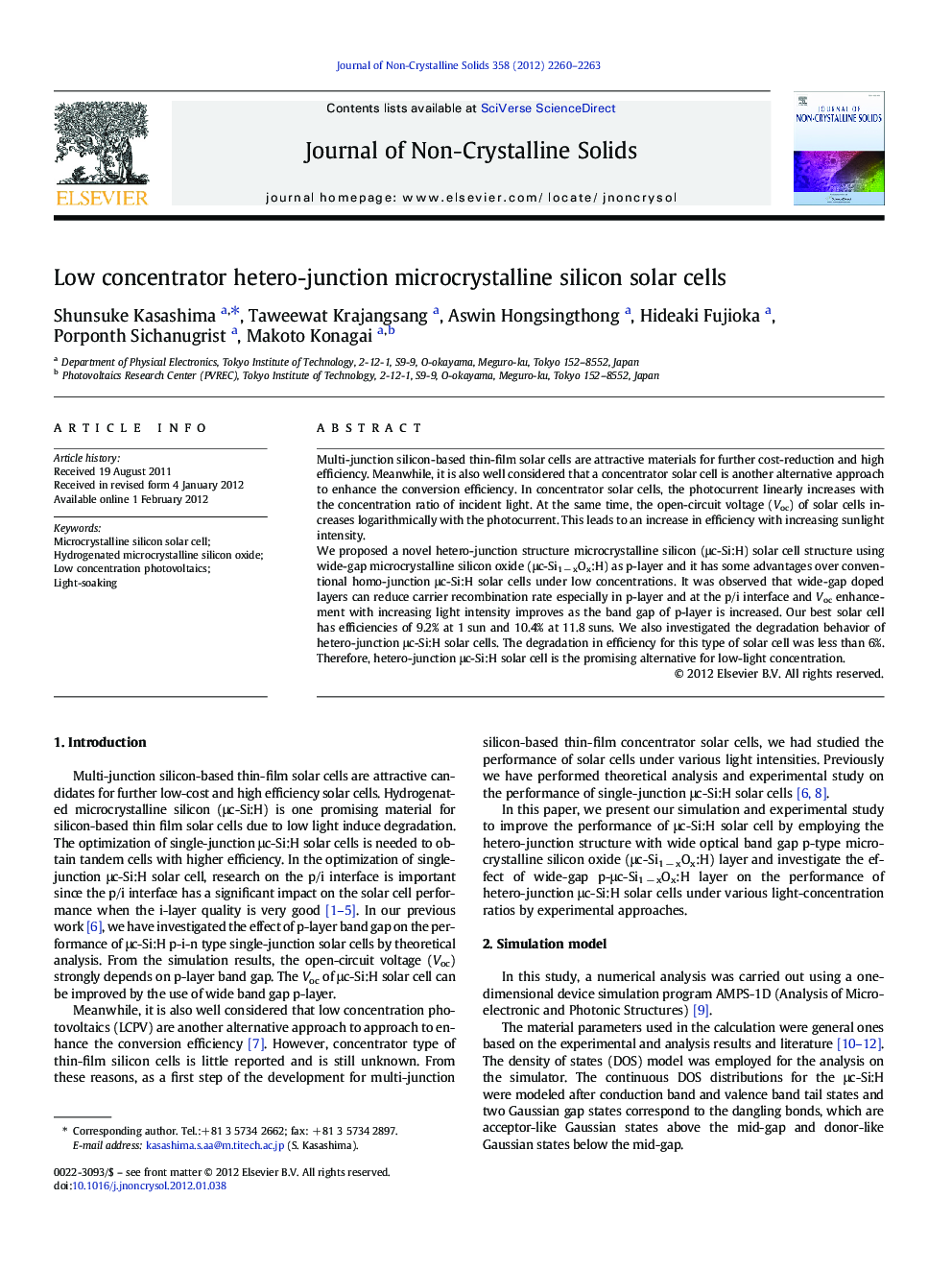| Article ID | Journal | Published Year | Pages | File Type |
|---|---|---|---|---|
| 1481716 | Journal of Non-Crystalline Solids | 2012 | 4 Pages |
Multi-junction silicon-based thin-film solar cells are attractive materials for further cost-reduction and high efficiency. Meanwhile, it is also well considered that a concentrator solar cell is another alternative approach to enhance the conversion efficiency. In concentrator solar cells, the photocurrent linearly increases with the concentration ratio of incident light. At the same time, the open-circuit voltage (Voc) of solar cells increases logarithmically with the photocurrent. This leads to an increase in efficiency with increasing sunlight intensity.We proposed a novel hetero-junction structure microcrystalline silicon (μc-Si:H) solar cell structure using wide-gap microcrystalline silicon oxide (μc-Si1 − xOx:H) as p-layer and it has some advantages over conventional homo-junction μc-Si:H solar cells under low concentrations. It was observed that wide-gap doped layers can reduce carrier recombination rate especially in p-layer and at the p/i interface and Voc enhancement with increasing light intensity improves as the band gap of p-layer is increased. Our best solar cell has efficiencies of 9.2% at 1 sun and 10.4% at 11.8 suns. We also investigated the degradation behavior of hetero-junction μc-Si:H solar cells. The degradation in efficiency for this type of solar cell was less than 6%. Therefore, hetero-junction μc-Si:H solar cell is the promising alternative for low-light concentration.
► Wide-gap p-layer reduce carrier recombination rate in p-layer and at the p/i interface. ► Wide-gap p-μc-Si1 − xOx:H film improved the performance of low concentrator hetero-junction μc-Si:H solar cells. ► Degradation in efficiency was less than 6% for hetero-junction μc-Si:H solar cells.
